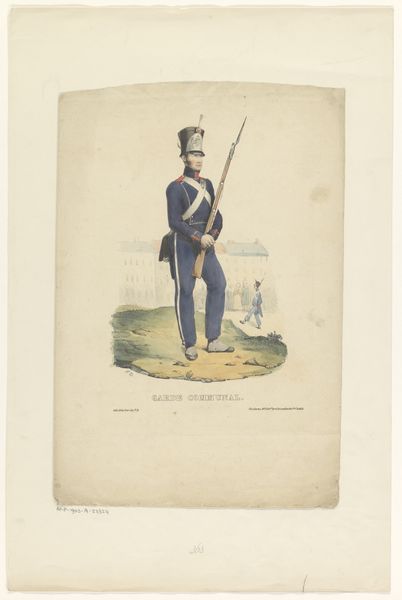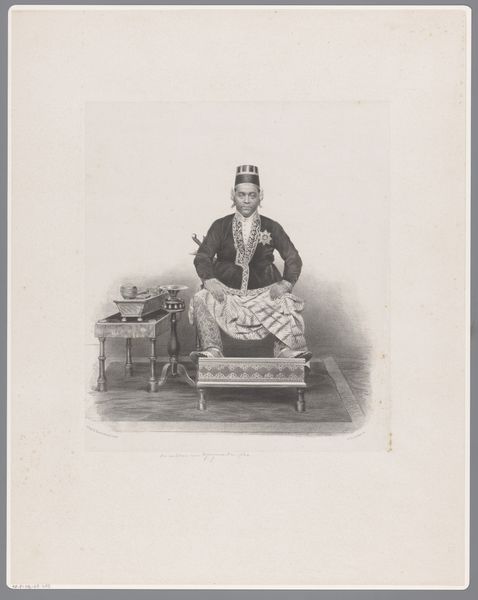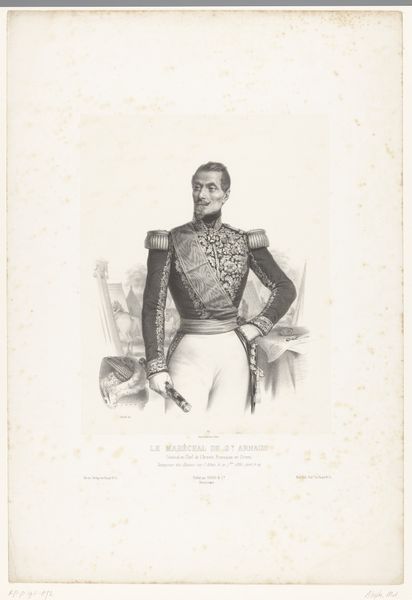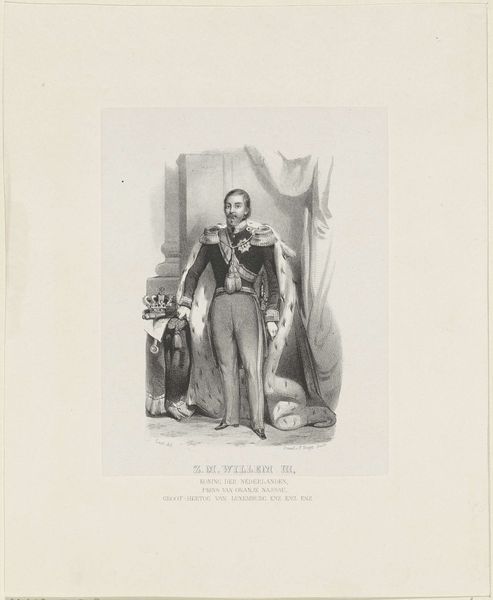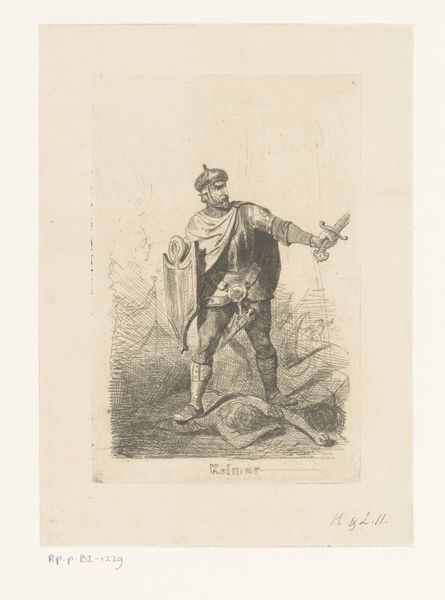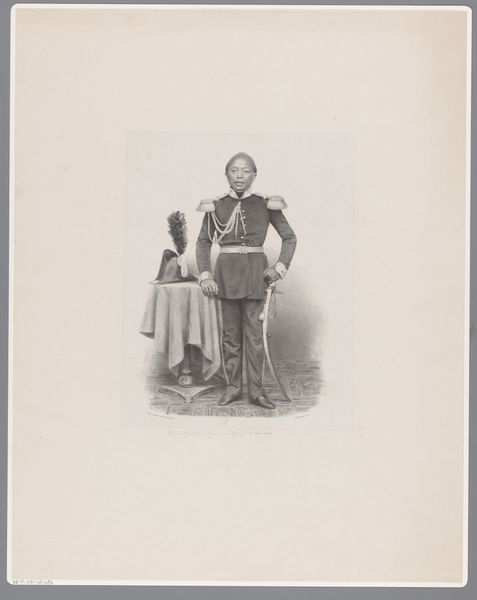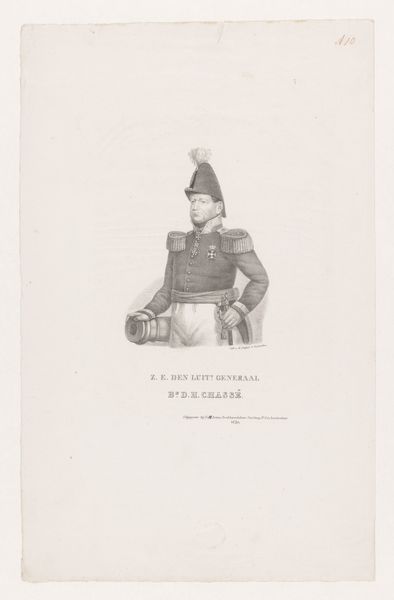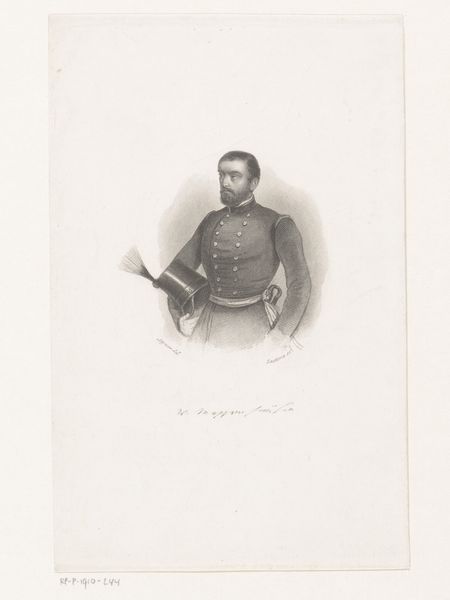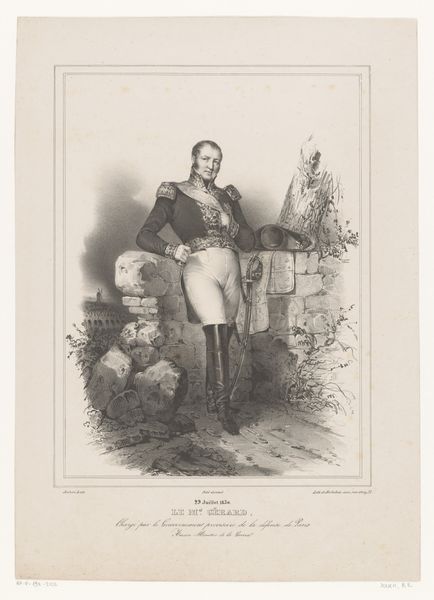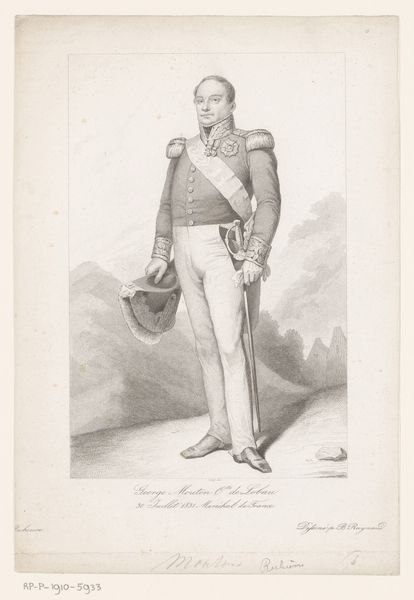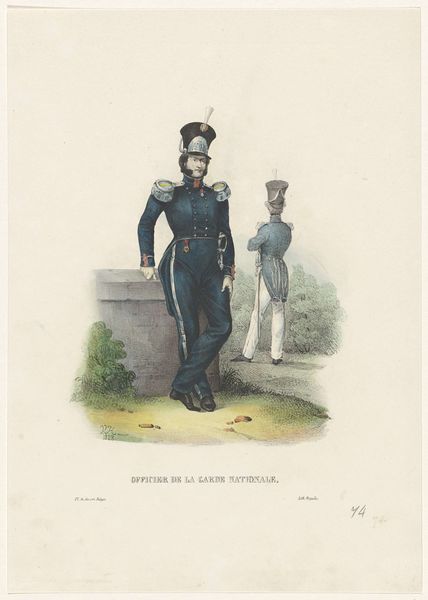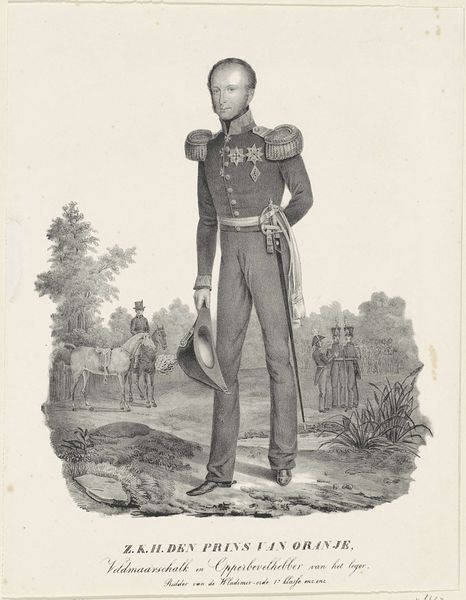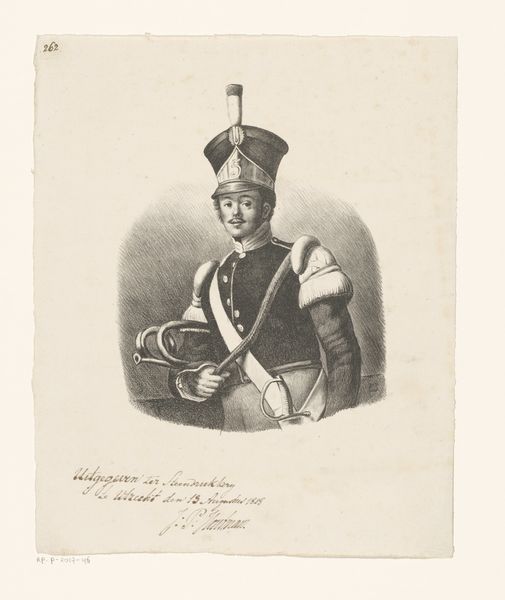
drawing, lithograph, print, pencil
#
portrait
#
drawing
#
lithograph
# print
#
romanticism
#
pencil
#
genre-painting
Dimensions: height 278 mm, width 220 mm
Copyright: Rijks Museum: Open Domain
Curator: This lithograph by Jean-Louis Van Hemelryck, likely created sometime between 1820 and 1875, is called "Soldier leaning on his rifle". It depicts a member of the Belgian Garde Nationale. My first impression is one of a poised yet melancholic figure. The tonal range creates a sense of restrained drama. Editor: I notice how the tall, cylindrical hat, adorned with its plume, mirrors the nearby bollard, connecting him formally to the urban landscape and emphasizing the role of the individual in a larger societal structure. And I’m especially struck by the symbol of the rifle: normally it means active defense, readiness, protection—but here he is *leaning* on it, seemingly idle. Curator: Exactly. Consider the socio-political climate. The Belgian Revolution of 1830 secured independence. The Garde Nationale embodied a newly independent Belgium finding its footing. They transitioned from revolutionaries to something more akin to constabulary and civic order. Editor: So, he’s standing, guarding, watching… But what’s he *seeing*? The other guards, blurred into the distance, look away; the whole image appears to express a dream or half-forgotten idea. What emotions might Van Hemelryck seek to evoke, by turning revolutionary promise into something so… static? Curator: That contrast between revolutionary fervor and the practicalities of maintaining order is at the heart of it, I think. This uniform itself becomes a signifier. Look at the high collar, the neatly arranged crossbelts... he's almost corseted in duty, if you will. Van Hemelryck likely captured the evolving symbolism of national identity—from radicalism to routine. Editor: I also note that there’s something theatrical about his posture and dress; these highly stylized, idealized figures almost evoke a theatrical stage. Van Hemelryck seems very aware of how clothes create powerful codes. What could that indicate about this cultural memory, then? Is this stillness itself a commentary on constructed identities? Curator: That’s perceptive. Indeed, the romantic style—also seen with other figures from this time—elevates genre painting beyond the everyday, into something bordering on grand historical narrative, despite its seeming simplicity. I feel Van Hemelryck challenges us to reflect upon civic responsibility, caught between action and reflection. Editor: A subtle but ultimately thought-provoking study, then. The artist really captures a particular moment in time, as duty morphs to destiny and is imprinted onto posture.
Comments
No comments
Be the first to comment and join the conversation on the ultimate creative platform.

